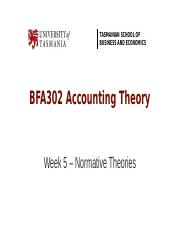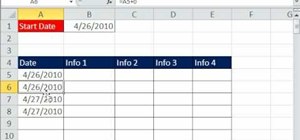Content

The end result of the duration calculation, which is unique to each bond, is a risk measure that allows investors to compare bonds with different maturities, coupons and face values on an apples-to-apples basis. Duration provides the approximate change in price that any given bond will experience in the event of a 100-basis-point change in interest rates. For What is Bond Price? Definition of Bond Price, Bond Price Meaning example, suppose that interest rates fall by 1%, causing yields on every bond in the market to fall by the same amount. In that event, the price of a bond with a duration of two years will rise 2% and the price of a five-year-duration bond will rise 5%. Understanding bond yields is key to understanding expected future economic activity and interest rates.
Current Inflation Vs. Expected Inflation (January 2023) – Forbes
Current Inflation Vs. Expected Inflation (January .
Posted: Tue, 31 Jan 2023 15:21:51 GMT [source]
If the issuer has a poor credit rating, the risk of default is greater, and these bonds pay more interest. Bonds that have a very long maturity date also usually pay a higher interest rate. This higher compensation is because the bondholder is more exposed to interest rate and inflation risks for an extended period. A financial security refers to an instrument such as a stock or bond that represents a financial claim against assets. For example, as was covered in Chapter One, bonds typically have a fixed cash flow stream over a finite time horizon while stocks typically have a variable cash flow stream over a potentially infinite time horizon. Stocks also tend to be riskier than bonds, which results in investors demanding higher rates of return to compensate for the additional risk. While financial securities may have different characteristics, the concept of valuation is essentially the same regardless of the specific security.
What Is Bond Duration?
Conversely, in a falling interest rate environment, money from maturing bonds may need to be reinvested in new bonds that pay lower rates, potentially lowering longer-term returns. Then, macroeconomic conditions in the world worsen, and the Federal Reserve begins lower the federal funds rate. By extension, many other rates begin to drop, and the prevailing rate of interest in the market now is only 2%. The bond market is the collective name given to all trades and issues of debt securities. For example, imagine a company that needs to borrow $1 million to fund a new project. They could borrow by issuing bonds with a 12% coupon that matures in 10 years. Most bonds can be sold by the initial bondholder to other investors after they have been issued.
- Companies issue bonds rather than seek bank loans for debt financing in many cases because bond markets offer more favorable terms and lower interest rates.
- Would you ever pay more than $1000 to buy a $1000 non-convertible zero coupon bond?
- Understanding duration is particularly important for those who are planning on selling their bonds prior to maturity.
- Bonds usually offer increasingly higher yields as their maturities get longer.
- When there’s volatility, bonds with low duration and high coupons would be best.
- Again, investors who purchase bonds with low credit ratings can potentially earn higher returns, but they must bear the additional risk of default by the bond issuer.
The corporation might decide to sell 1,000 bonds to investors for $1,000 each. The corporation – now referred to as the bond issuer − determines an annual interest rate, known as the coupon, and a time frame within which it will repay the principal, or the $1 million. To set the coupon, the issuer takes into account the prevailing interest rate environment to ensure that the coupon is competitive with those on comparable bonds and attractive to investors. The issuer may decide to sell five-year bonds with an annual coupon of 5%. The additional risk incurred by a longer-maturity bond has a direct relation to the interest rate, or coupon, the issuer must pay on the bond. In other words, an issuer will pay a higher interest rate for a long-term bond. An investor therefore will potentially earn greater returns on longer-term bonds, but in exchange for that return, the investor incurs additional risk.
What Is an Example of a Bond?
The relationship between maturity and yields is called the yield curve. The price depends on how much you will earn from the bond over a certain time period. To calculate the price, you will have to compare today’s rates on similar bonds, as well as the present value of remaining payments and the bond’s face value. The yield you can earn on a bond depends on whether you purchased the bond for more than its face value or less than its face value .

In a bankruptcy involving reorganization or recapitalization, as opposed to liquidation, bondholders may end up having the value of their bonds reduced, often through an exchange for a smaller number of newly issued bonds. Asset-backed securities are bonds whose interest and principal payments are backed by underlying cash flows from other assets. Examples of asset-backed securities are mortgage-backed securities , collateralized mortgage obligations , and collateralized debt obligations . A bond quote is the price as a percentage of the face value or “par” value. Bond quotes also include important information for investors about maturity date, coupon rate, and yield. For example, if a bond has a 4% coupon and the prevailing interest rate rises to 5%, the bond becomes less attractive and so its price will fall.
Bond prices and interest rates
Reference Bond Dealer means each of Barclays Bank PLC, Deutsche Bank AG, London Branch, Goldman Sachs & Co. Morgan Securities plc , and their respective successors and any other broker of, and/or market maker in, German government bonds (a “Primary Bond Dealer”) selected by the Company. The bonds were effectively issued on 31 May 2002 for Lm100 each bond with the exception of 4,846 bonds issued at the Employee Bond Price of Lm97.50 per bond under the terms and conditions of the Employee Offering. Treasury bonds, the yield calculation used is a yield to maturity. In other words, the exact maturity date is known and the yield can be calculated with near certainty. When you buy a bond, you are entitled to the percentage of the coupon that is due from the date that the trade settles until the next coupon payment date.
As demonstrated above, the value of a bond moves inversely to the market rate of interest so that as interest rates fall, bond prices rise and vice-versa. Also, given the current price of a bond, the expected return of that bond, either the yield-to-maturity or yield-to-call, can be calculated. The required return on bonds is a primarily a function of anticipated inflation over the life of the bond and the risk of the bond. The primary risk factor is default risk which is approximated through bond ratings. As stated above, the value of a bond is equal to the present value of the cash flows that the particular bond will pay.
The more the bond’s interest rate falls , the more its price will rise . Suppose you buy a bond with a face value of Rs.1,000, a maturity period https://online-accounting.net/ of five years, and a 10% annual coupon rate. In this case, your coupon yield will be Rs.100, which you will earn as annual interest payouts.
What are the 5 types of bonds?
There are five main types of bonds: Treasury, savings, agency, municipal, and corporate. Each type of bond has its own sellers, purposes, buyers, and levels of risk vs. return. If you want to take advantage of bonds, you can also buy securities that are based on bonds, such as bond mutual funds.
Bond markets, unlike stock or share markets, sometimes do not have a centralized exchange or trading system. Rather, in most developed bond markets such as the U.S., Japan and western Europe, bonds trade in decentralized, dealer-based over-the-counter markets. In such a market, liquidity is provided by dealers and other market participants committing risk capital to trading activity. In the bond market, when an investor buys or sells a bond, the counterparty to the trade is almost always a bank or securities firm acting as a dealer. In some cases, when a dealer buys a bond from an investor, the dealer carries the bond “in inventory”, i.e. holds it for their own account. In other cases, the dealer immediately resells the bond to another investor. Inflation-indexed bonds or index-linked bonds , in which the principal amount and the interest payments are indexed to inflation.
In this example, the price rises to 104, meaning they are willing to pay you $20,800 (20,000 x 1.04). At a price of 104, the yield to maturity of this CD now matches the prevailing interest rate of 1%. In the online offering table and statements you receive, bond prices are provided in terms of percentage of face value. When investing in bonds & CDs, it’s imperative to understand how prices, rates, and yields affect each other. This tells me that I am going to receive an interest payment of $30 twice per year for each of the next 20 years plus at the end of the 20th year, I will receive $1000. This is my cash flow stream which must be discounted back to today at the 8% required return that I want to receive. But few investors have the time or ability to measure the credit risk of a bond.

